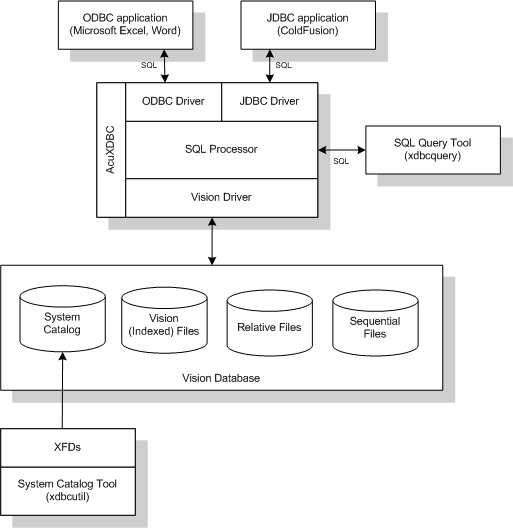Basic Components
AcuXDBC includes a database tool (xdbcutil) that creates and populates a system catalog from your XFDs. A system catalog is where database systems store metadata that describes the structure of the database system itself, as well as the structure of specific tables. You can generate XFDs at compile time along with your COBOL object files.
After you run xdbcutil, your COBOL data becomes like a relational database — a COBOL database — accessible to applications that issue SQL requests for data. After setup, your XFDs are expendable, unless you use them for another application.
When deployed, the basic components of a AcuXDBC system include:
| An ODBC and/or JDBC driver | Receives SQL requests from ODBC- or JDBC-enabled applications and routes them to the SQL processor. (For information about ODBC drivers on UNIX, see the topic Using the unixODBC Driver.) |
| An SQL processor | Processes SQL requests, queries the driver, and returns results |
| A Micro Focus driver | Provides access to the COBOL database |
| Your COBOL database |
|
With AcuXDBC, you can also use an SQL query tool, such as xdbcquery, to issue SQL requests for COBOL data directly. This bypasses the ODBC/JDBC layer altogether. xdbcquery comes with AcuXDBC.
The following illustration depicts the basic components of AcuXDBC:

A COBOL database is the system catalog and the COBOL files it describes (indexed, fixed sequential, and relative) that reside in one or more directories. For a given installation, you may have one or more COBOL databases. Only one database may be accessed by an application at one time; however, a single file may be a component of multiple databases.